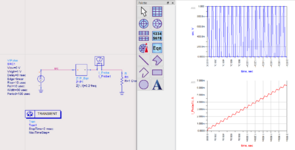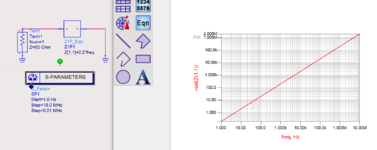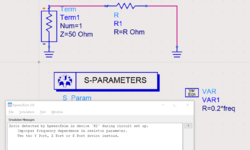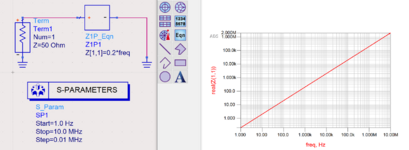farshaddd
Newbie level 5
Hello everyone.
I have a resistor that is defined as:
R=0.2*f
where f is the frequency of the resistor voltage or current.
My problem is that how can I define this resistor in my transient (Time domain) simulations in ADS or other software?
Thanks, everyone.
I have a resistor that is defined as:
R=0.2*f
where f is the frequency of the resistor voltage or current.
My problem is that how can I define this resistor in my transient (Time domain) simulations in ADS or other software?
Thanks, everyone.



